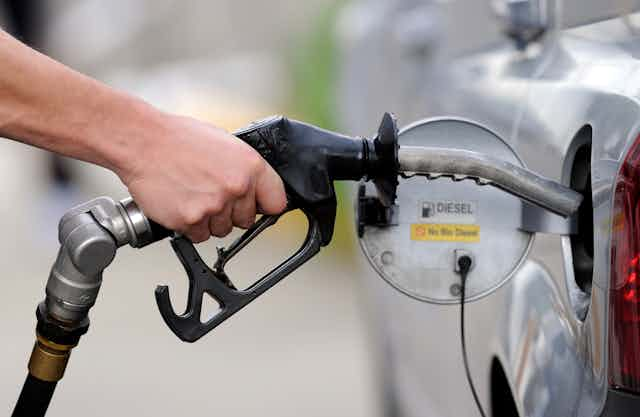Big petrol retailers are pushing the price of petrol up by communicating through prices and while this is technically legal, it should be receiving more scrutiny from regulators because it’s what researchers call tacit collusion (also known as price leadership). New analysis of retailers in Perth over a period of five years shows this inflated the price motorists are paying to fill up their tanks, and retailers are making 50% higher profit margins as a result.
My research with Associate Professor Nicolas de Roos at The University of Sydney, has analysed more than 1.7 million unique petrol price data points from 771 petrol stations, examining the evolution of competitive conduct and tacit collusion over a 15-year period. We took into account the retailer’s costs, including tax, to work out how much they made of this behaviour.
While we’re not suggesting that the petrol retailers are engaged in explicit collusion, the findings present an urgent new challenge for policymakers and the Australian Competition and Consumer Commission in dealing with markets that are dominated by just a few big players among many small ones.
What this means is that any change in the structure of markets that gives way to a few dominant players yields a setting that is ripe for dominant players to engage in price leadership and initiate tacit collusion, which we know is already happening in the petrol market. Big players can act like conductors, and smaller players can act like the orchestra, in coordinating on tacitly collusive pricing behaviour.
Australian motorists might have already noticed that petrol prices move in cycles. In Perth, the petrol price cycles work like clockwork - every Thursday prices jump by 15-20 cents per litre and then are progressively cut back by 2 cents per litre per day until the next Thursday price jump when the cycle repeats itself.
Before 2010, all major petrol retailers in Perth – BP, Caltex, Woolworths, and Coles – as well as the smaller independent retailers like Gull, engaged in price jumps on all days of the week. But after 2010, we see a change.
BP, the market leader, introduced Thursday price jumps. At first the price jumps were limited to the majority of its own stations, but soon we saw BP’s competitors conform to the Thursday jumps at different rates. After only two years, Thursday jumps were solidified as a focal point for setting market prices.

This price setting tactic softened price competition, resulting in higher profits for all petrol retailers involved, and higher prices for consumers. We found that between 2010 and 2015, retailers saw profit gains of up to 57% at the top of the price cycle; from 11.39 cents per litre to 17.87 cents per litre. That means consumers were paying up to 57% more to fill their car than five years earlier.
Profit increases seen at the bottom of the price cycle were even more stark. Before 2010, companies would compete profits away to near 0.71 cents per litre at the bottom of the cycle. However after 2010 the coordination led to profits rising to 5.73 cents per litre at the bottom of the cycle, a near 700% increase in profits. The deals that once existed at the bottom of the cycle eventually disappeared as the companies were able to coordinate on higher profit margins over time.
These changes in profits imply roughly a 7 cents per litre transfer from the average consumer to the companies. If you own a Toyota Camry with a 70 litre fuel tank, then because of this tacit collusion pricing, you are paying about A$4.90 each time you fill up. If you fill up your tank twice a month, you are paying roughly A$120 more per year in petrol costs, a substantial increase for most Australian families.
Our study has provided evidence of the ways through which tacit collusion, without any form of explicit communication, is possible. As a dominant firm, BP is able to use its pricing to communicate with its rivals in a way that leads to higher prices and profits.
It’s not all bad news. The data that can be gathered from these types of markets (or “big data” environments) like the one we study potentially present new opportunities for competition authorities to detect and investigate collusive behaviour.
Historically, policymakers have used screens for collusion that detect cartels that have already formed. Our research provides new insight into the patterns to look for in data rich environments, namely price leadership and price experiments, to identify cartels during their incubation stage, not after they are already formed.
This piece has been corrected since publication for errors in the amount originally stated on a price jump on Thursdays and profit gains of retailers.

